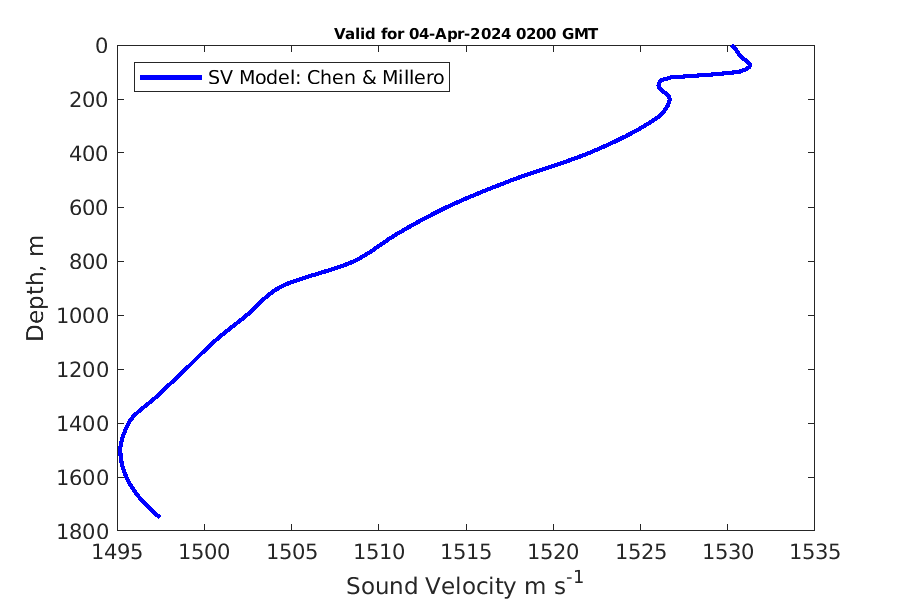Ocean Forecast – Sound Velocity Profile
There are times during a Multi-beam survey when it is simply not operationally possible to update the sound speed profile. In that case it is possible to use the temperature and salinity forecast data from the Real-Time Ocean Forecast System (RTOFS) and calculate the sound velocity profile. The results are generally quite good, especially well offshore.
Sound Speed: The sound speed profile shown here is generated from the Chen & Milero model (1977) using the salinity and temperature profiles extracted from RTOFS. The temperature from the RTOFs model is potential temperature relative to the surface. Therefore in order to compare to actual sound speed profiles calculated from CTD profiles, which obviously are not using potential temperature, the model potential temperature is first converted to the insitu temperature. Pressures are converted to depth in metres using Leroy & Parthiot (1998). If needed, sound speed profiles can also be generated using the models of Del Grosso (1974) as modified by Wong & Zhu (1995), Fofonoff & Millard (1983), Mackenzie (1981), Wilson (1960) and the Thermodynamic Equation of SeaWater 2010 (TEOS10).
Absorption Coefficient: The absorption coefficient profile is calculated from the Absorption Coefficient Model (Kongsberg, 2007) using the salinity profile and the insitu temperature profile used for the sound speed, the sound speed profile itself (see above) and the profile of the pH from the Global Ocean Biogeochemistry Analysis and Forecast model. The Global Ocean Biogeochemistry Analysis and Forecast model is run weekly by the Copernicus Marine Service.

©Deep Blue Analysis LLC, 2020 - 2024
